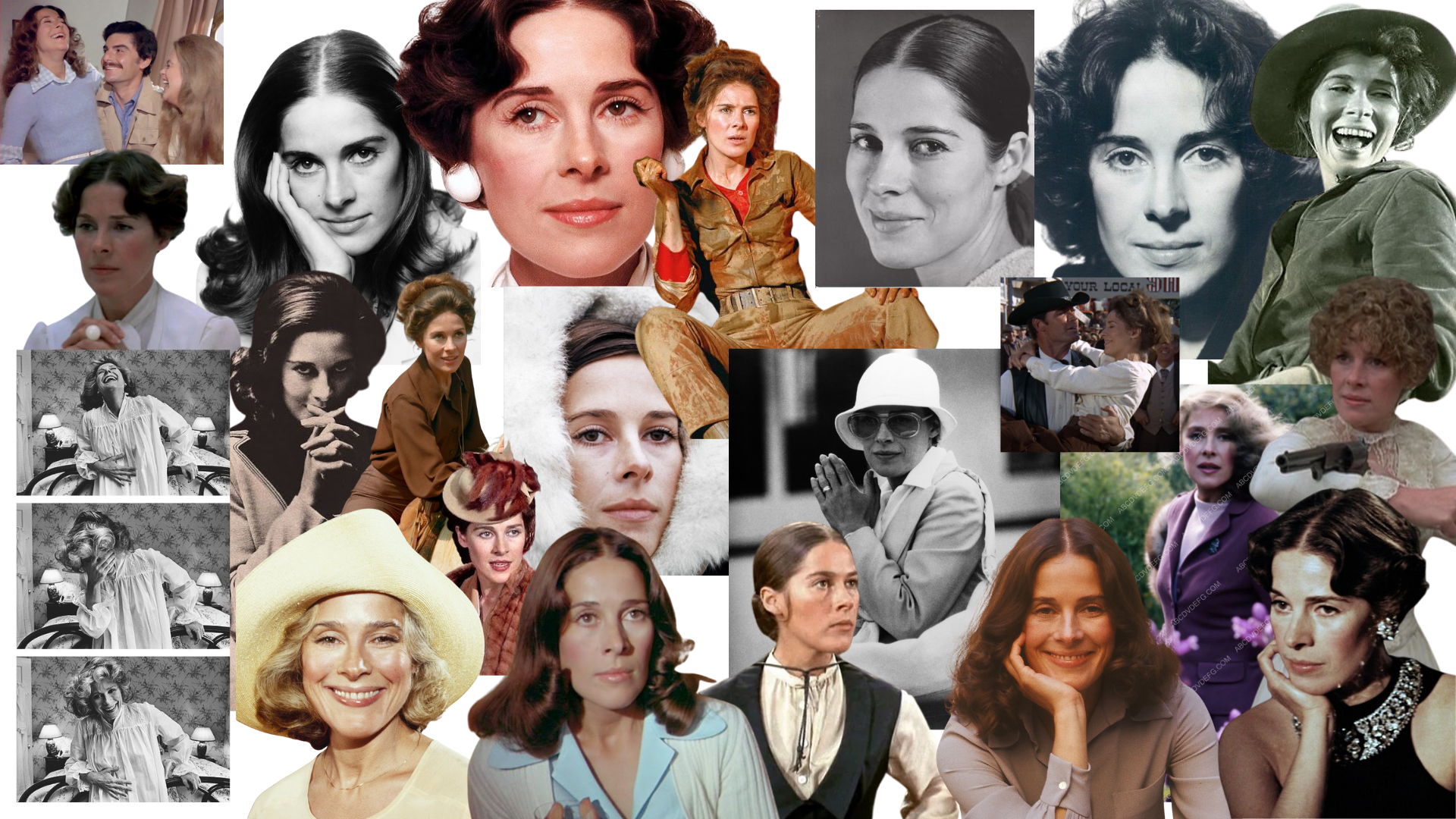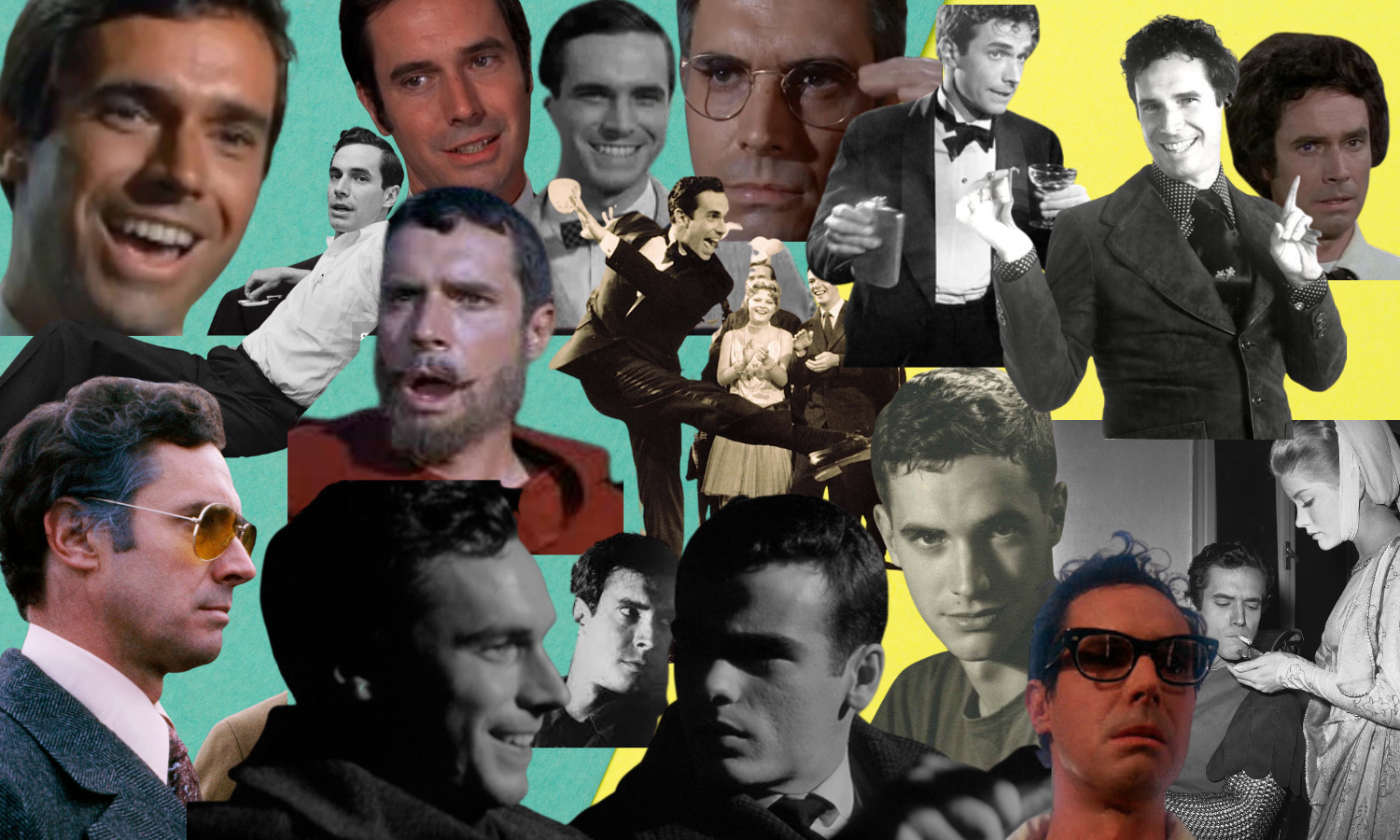The Year of Joan Hackett
I love Joan Hackett. She was a singular actor. I embarked on the Year of Joan Hackett in a bid to complete her filmography.
I love Joan Hackett. She was a singular actor. Onscreen, she had the best and the biggest energy. She was sweet and savory. She was inimitable. She had an instantly recognizable voice and the hair of a turn of the century Gibson Girl. She could make you cackle with laughter or break your heart into tiny splinters. She was explosive and tender. She was overwhelming and gentle. Like the best of our immortalized actors, watching her onscreen is like spending time with a dear old friend.
In January, I was watching her in The Last of Sheila (1973) for the first time (I know! I know! A film made entirely for me that I somehow had not seen age fifteen late on a Friday night with a library DVD). I was thinking about how much I adore her work, and how much I actually hadn’t seen of her short career.
I embarked on the Year of Joan Hackett in a bid to complete her filmography. This is something I successfully did in 2023 with Sandra Dee (and never got around to writing about, naturally), and attempted and failed in 2024 with Audrey Hepburn (so close; I will circle back around to the Lady Hepburn). I am using Letterboxd’s version of her filmography (via TMDb) as it limits her work to feature films and television movies: 31 titles versus the 69 credits on IMDb (this still leaves me so many delicious 1960s and 1970s TV episodes to enjoy at my leisure).
The dark winter months were very successful and I watched many new-to-me Hacketts. I have admittedly fallen off since the summer, but, as the days grow shorter, my appetite for spending time inside laying about on my couch increases.
I have decided to chronicle My Year of Joan Hackett here, and update until I am completed. I have been keeping a ranking of Joan Hackett, and I must say that is purely based on some indescribable Hackettness that I am personally determining and nothing else. Does the film give me the hit of Hackett that I crave? Does Joan get to say or do something wild or chaotic or emotively tender? Is she brittle or is she full of life? The Hackett variations are myriad.
Joan Hackett Filmography
Joan Hackett Ranked
Support Your Local Sheriff! (1969)









Joan Hackett as Prudy Perkins was foundational for me, and I still love to rewatch. I never grow tired of her weirdo performance. All awkward limbs and deep, abiding rage. When she yells, “Death to all tyrants!” and tries to chain herself to a support beam at the city council meeting and they all respond like she has done this many times—perfection! Her chemistry with James Garner is so unbearably generous and fun.
2. Five Desperate Women (1971)

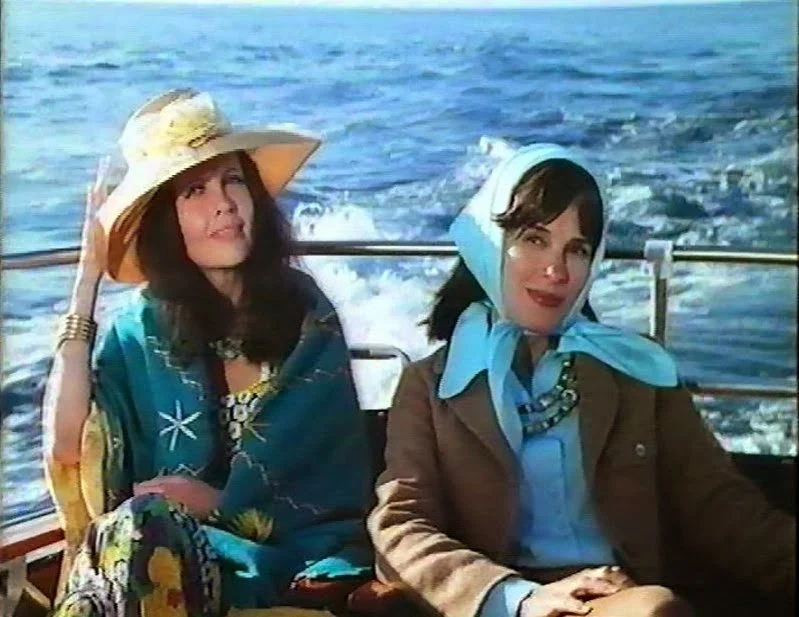
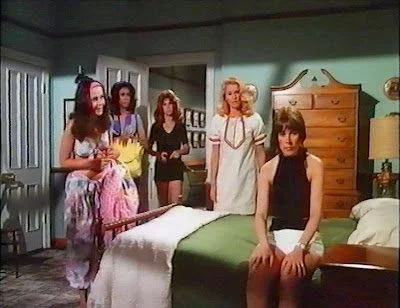
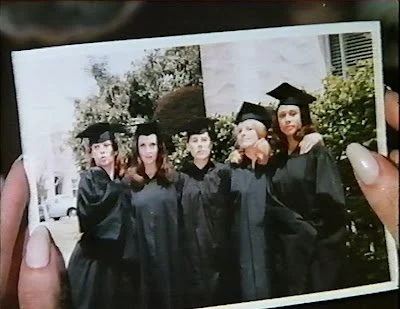
I first watched this eight years ago, and I was obsessed. Truly the stuff the TV movie dreams are made of. A perfect cast from top to bottom, but Joan Hackett still stands out as she spends her entire run-time lying profusely to everyone around her while wearing all manner of elegant fashion before breaking down and admitting she has a TV in every room playing constantly so she won't be reminded she's ALONEEEEE. There is nothing better than Joan Hackett amidst a group of women. You can watch on YouTube here.
3. The Last of Sheila (1973)





As mentioned above, this was a 2025 new-to-me film, and it quickly jumped into the top echelon of Hackettness. She is so good and vulnerable and brittle but with a very sharp edge. She plays everything just right. SPOILER IN WHITE TEXT (HIGHLIGHT TO VIEW): Based on her performance, I genuinely thought that she was one who belonged to the “You are a Homosexual” card, and that she was having an affair with Raquel Welch. THE SIGNS WERE ALL THERE (IN MY HEAD LOL). END SPOILER.
4. The Young Country (1970)

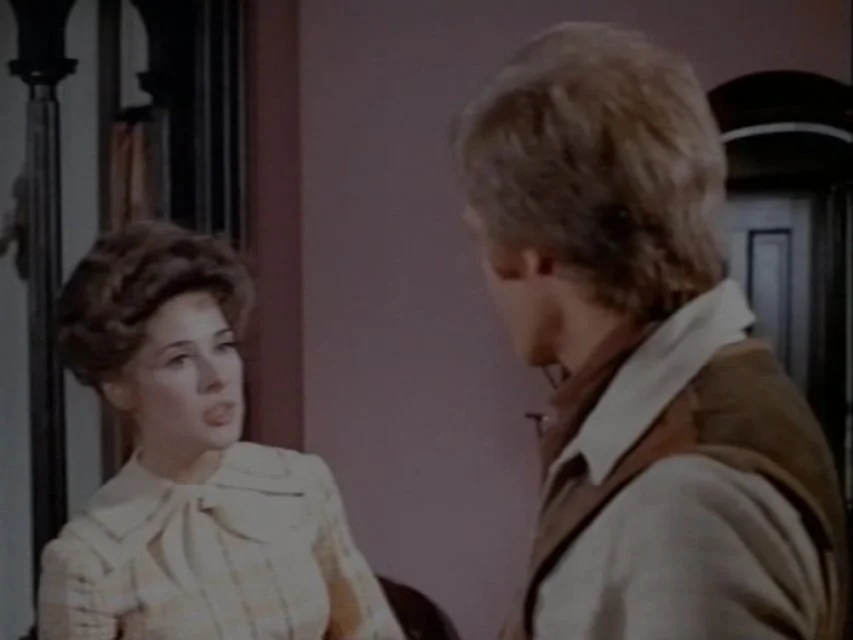


Okay, so this isn’t very good (and was remarkably hard to find to watch), but I do love visiting the wacky mind of Roy Huggins. The unfortunate thing is that he was always trying to make Roger Davis happen as one of his charming rapscallions, and well the man was full of menace onscreen! (He played the only man that Kid Curry ever killed!) He is somehow the lead here instead of Pete Duel who plays a supporting role (this all got sorted out when Alias Smith and Jones premiered the next year). None of this touches Joan Hackett though with her signature hair poof and the driest, smirkiest delivery. Perfection. I have probably ranked it too high, but it’s just such potent synthesized Hackettness. Joan Hackett + Pete Duel is also the smoothest delight. They have wonderful chemistry and their scenes together are the best in the movie. (I have also cheated here and added a photo to the slideshow from her guest appearance on Alias Smith and Jones, because she is just a perfect third with boys).
5. Reflections of Murder (1974)









The girlfriends are plotting murder on an unnamed island off of Seattle, and we are having a great time! Joan Hackett was the queen of full-bodied vulnerability, and she ably portrays a journey into hysteria. I loved her chemistry with Tuesday Weld. And, here, she also demonstrates her skill with acting alongside children. She always has a true sweetness and gentleness in that regard. Watch on YouTube here.
6. Rebecca (1962)


A truly short (sub-hour) live television adaptation of Rebecca (notably adapting the 1940 film, and not the novel), but oh my, she is so good as the Second Mrs. de Winter. I would have loved her in a full adaptation. She has that exact right combination of nervousness and steeliness and freshness. This one is somewhat of a rarity and I had to rent on VHS from my local video store.
7. The Other Man (1970)



Isolated house on the rainy northern Pacific Coast! Melodrama! Joan Hackett doing her greatest hits! This is a really strong Hackett performance. The edgy vulnerability. The gentleness that can explode when provoked by cruelty. The fight between staying safe (internalizing emotions) and being authentic (emotions out loud). She is the star here, and works well with Roy Thinnes.
8. The Group (1966)





A wonderful cast of women makes up the group, and there is not an underwhelming performance in the bunch. However, obviously, I am Hackett-biased, and I think she brings a very lovely and very Hackett brittleness here. She stands out even among all the great actors around her. She also just looks so good in a 1930s haircut and dress.
9. Assignment to Kill (1968)




Joan Hackett so cute and charming in this! I love her flippy hair and slacks and ties. I love her eye rolling and quipping. Alas, however, she is not the lead of the film, so we do not get to spend every minute of screentime with her present. It would have been a better film if that was the case. When her character departs the film, so does all my interest. This is a really fun role to see her in, and I will pretend she left that boring man and safely continued her quipping in slacks and ties for the rest of her days.
10. How Awful About Alan (1970)






It would have been entirely easy for this film to have cast Julie Harris and Anthony Perkins as sensitive, awkward freak siblings and called it a day (I would have still watched that film) without bothering to cast anybody good in the role of the patient and supportive fiancé. Thankfully, they cast Joan Hackett. She's darling here, and does some of her inimitable work managing to imbue goodness with such shape and substance. (A true Pisces, I suppose.)
11. The Possessed (1977)





Don’t ask me any questions, but yes, I would love to go to Joan Hackett's School for Girls! This is the absolute pinnacle of Joan Hackett stressed-out acting—she reaches spontaneous combustion levels of work-based anxiety (whom among us cannot relate). This is a performance that really shows how she can hit every big and small beat so perfectly.
12. The Treasure of Matecumbe (1976)





A deeply questionable film that cannot be recommended. Joan Hackett does however have poofy hair, a wild accent, a job running scams, and a gentle aunt energy with the child leads.
13. Dead of Night (1977)




TERRIFYING. I am not equipped for this kind of imagery. Oh, she is so good here as a mother who is losing her mind with grief and maybe also whoops summoning demons? Many actors talk about how it can be hard to act opposite children, but Joan Hackett worked with children many times and always has such a perfect energy match to them.
14. Pleasure Cove (1979)






A nothing of a TV movie, but she is so delightful as one-half of a pair of battling exes who show up at the same resort. She is a professor leading along a young dummy of a boyfriend, and generally being her caustic best. She is simply too much fun and I love her big hair and track suit.
15. The Escape Artist (1982)




I find it singularly painful to watch films starring the O'Neal children. Vulnerable children with no advocate; no safe adult. This one has a distinct sadness as Griffin O'Neal's character spends the film trying to cope with the enigma of his father's death and the confusion and grief of that loss. However, Joan Hackett knows how to work with children, and she is really lovely here in one of the final roles. Her interactions with Griffin sing with such a gentleness and genuine sweetness.
16. The Long Summer of George Adams (1982)




A Joan Hackett + James Garner reunion! Their chemistry so exactly right thirteen years after Support Your Local Sheriff! This was one of Hackett's final performances, and her energy is the heartbeat to this story. (I do not forgive Garner’s character for his betrayal though!)
17. Paper Dolls (1982)






A Joan Hackett v. Joan Collins Joan-Off! A small supporting performance from Hackett, but she is fun as a demanding stage-mom of her teen model daughter. She is all business with a slicked back pony.
18. One Trick Pony (1980)


Joan Hackett is a minor character in this film, so she does not have much to do. She does get to appear wise and wry and also looks great as a sleek blonde. She is the smartest one in the movie and I would have loved to watch her movie.
19. The American Woman: Portraits of Courage (1976)



When I say Joan Hackett completism, I mean COMPLETISM. This is a fascinating artifact of 1976. She plays Belva Lockwood, lawyer/politician, for one scene recounting a story about defending a woman in court against her husband. Not a lot to say here, but I do think that Joan Hackett always looks incredible with poofy late 1800s hair and she does have such gravitas. A natural pick for the role.
20. Class of ‘63 (1973)


A TV movie with so many unfulfilled plot-lines, I wondered if the version I saw was edited? Anyway, my only feeling after watching it was: Joan Hackett, a queen! Leave both that short loser and that tall loser behind. Live your life!
21. Stonestreet: Who Killed the Centerfold Model? (1977)




One thing that simply was not utilized enough in Joan Hackett’s career was casting her as a villain. She really is fun here as a sinister lady with giant glasses doing evil business things from behind a phone. Watch on YouTube here.
22. Flicks (1983)






I believe this was her final released performance. Her parody vignette as a spaceship commander ala Star Trek is somewhat painfully unfunny, but not her. She is just a delight. Imagine the dream of her playing this role in a serious production.
Joan Hackett in Progress
Will Penny (1967)
Lights Out (1972)
Rivals (1972)
The Terminal Man (1974)
Mackintosh and T.J. (1975)
Mourning Becomes Electra (1978)
Mr. Mikes Mondo Video (1979)
The Long Days of Summer (1980)
Only When I Laugh (1981)
Playlist of Films Available on YouTube:
-Meg
The Sinister Fun of Bradford Dillman
“By my reckoning, in over four decades I’ve been personally responsible for the demise of well over a thousand people. Heck, at Jonestown alone my Kool-Aid took out over nine hundred, and I’ve blown up the Queen Mary twice. Heroes are heroes. They pay the single greatest price of celebrity, the loss of privacy. This explains the army of bodyguards employed by some to keep the adoring multitudes at bay. Villains don’t have these problems. Me, I’ve never been bothered in a bar or boite. People can’t be sure I’m not carrying a knife or a gun.”
It is April, the sun is shining, and life is returning to some of our weary bones after what can only be described as a long, harsh winter of total discontent. In short, it’s Aries season, friends; and there is no better time to talk about charismatic villainous virtuoso Bradford Dillman (who would have turned 91 this April 14th). Bradford Dillman was an omnipresent actor in Hollywood for decades with a range that took him from The Actors Studio--debuting on stage with James Dean--and originating the role of Edmund Tyrone in the Broadway production of Long Day’s Journey Into Night to creature-feature horror and endless guest-starring roles attempting to kill the heroes in seemingly every 1960s and 1970s television program. He also kissed an ape in Escape From the Planet of the Apes.
Bradford Dillman is an heir to Peter Lorre and predecessor to Michael Shannon in the spectrum of actors giving us high-caliber sinister charm all mixed up with genuine emotional connection. He had the best evil smile in the business: a bent, slightly twisted smile that promised chaos--or at the very least some premeditated malice. His presence filled up all the empty spaces in every medium he appeared. A particular maximalist specialty of Dillman’s was the extended close-up on his face as it moved through dichotomous emotions--joy to rage; sadness to glee. He was acutely aware of movement in his face and body, but at the same time seemed to understand that he was supposed to provide an experience that was not quite human, more like human+. Why go out quietly, when you can go out screaming, howling, and/or cackling?
One of his early film roles was in Compulsion (1959), dir. Richard Fleischer, a fictionalized retelling of the Leopold and Loeb murder and trial. He played Artie Strauss (Loeb), a petulant 18-year-old rich boy who has never experienced a single consequence in his life and is convinced of his own superior intellect. He is as terrifying as he is charming, and his dominance over his (boy)friend as played by Dean Stockwell is the kind of performance that does not let you look away from it. Certainly not when he can be found carrying on an entire sinister conversation with a teddy bear. He shared the award for Best Actor at Cannes with co-stars Stockwell and Orson Welles (but not the teddy bear, which was a total snub). Compulsion is a film which is at times ethically dubious (for one, the murdered child is given almost zero consideration), but is at all times a work of performer-first filmmaking that builds a tremendous amount of tension, lets its actors run wild, and also contains a classic Welles’ fake nose (and fake eyebags?).
Dillman began as a method actor in important productions™, but since he and his wife Suzy Parker (supermodel; inspiration for Audrey in Funny Face) had a large family together, after she retired, he pivoted to being what he called a “Safeway actor”--anything to put food on the table. This is where he really shines: leaving a legacy of untrustworthy characters with intoxicating charm in every possible kind of film or television production. He was the man to go to for southern gothic werewolves or cult leaders or egotistical supervillains, and also sad dads or sweet dates-of-the-week for Mary Richards, or if you needed someone to play the nephew getting murdered by Uncle Ray Milland in an episode of Columbo. (My kingdom, my kingdom for an episode of Columbo with Bradford Dillman playing the murderer! Come on, Robert Culp and Jack Cassidy--stop being so greedy!)
One such unassuming production that got injected with Dillman was Jigsaw (1968), dir. James Goldstone. Jigsaw is a drug-trip murder mystery of uncommon chaos. (One wonders if even the film stock itself was laced with LSD?) It is also total fun, and perhaps even the platonic ideal of a sinister fun Bradford Dillman performance. He plays a repressed, emotionless scientist who wakes up with amnesia, blood on his hands, and in a room with a dead body. Suffice to say, the plot does later require him to trip on acid for ten minutes so he can remember (that’s how it works). The film was shot as a TV movie, but the content was too hot, so it got a theatrical release instead. Bradford Dillman has a great time, and the film plays up his unmatched ability to depict mania. Aside from the unfortunate use of a gruesome murder of a woman as essentially a plot mcguffin, this film offers perfect 1968 colorful+chaotic vibes.
That same year saw a theatrical release of another American television production with The Helicopter Spies (1968), dir. Boris Sagal, a two-part episode of Man From U.N.C.L.E. edited together as a single film for an international theatrical release. It contains an astonishingly fun performance from Dillman as the leader of a cult called The Third Way. Everyone in the cult (aside from him) is forced to dye their hair white blonde to match The High Priestess, while he wears an entirely white outfit (suit, shirt, shoes). Cult members greet each other by saying, “Keep the faith!” while offering a thumbs up. Naturally, he has plans to take over the world, charms absolutely everyone into believing him (including our two heroes), and goes on scamming. Because it is Dillman, we are never quite sure whether he is maliciously scamming for power and using the cult as a means; or whether he is maliciously scamming for power while actually believing in the cult. Delicious!
It is that level of morally unstable character (to borrow a line from The Naked Spur) that makes even supporting performances in films like Five Desperate Women (1971), dir. Ted Post, so much fun. The titular women are Joan Hackett, Stefanie Powers, Anjanette Comer, Denise Nicholas, and Julie Sommars. They are college BFFS reuniting on a private island cabin after five years--and they are a "mess" (some of them don’t even have husbands or babies yikes!). The chemistry between the women is genuinely perfect, and is a great intersection of heartfelt and camp. What we know, but the women do not, is that a murderous man is currently loose in the area. Naturally, our suspicion falls on Bradford Dillman as the boat captain who ferries them over to the island. He is a real weirdo and alienates them all almost immediately by explaining nutrition and how they clearly do not understand health like he understands it. Bradford Dillman keeps us dancing the whole time on the power of his sinister reputation alone.
This reputation for crafting exceptionally twisted...but fun characters (imagine I am saying that in a Sullivan’s Travels-like “with a little sex in it” cadence) kept him employed for decades. One of his final films was the Roger Corman-produced Lords of the Deep (1989), dir. Mary Ann Fisher. Honestly, this film is weird and freaky--and worth it for the wild camera work and special effects alone. It opens with a title card letting us know the year is 2020, and “Man has used up and destroyed most of Earth’s resources.” *gulp* Bradford Dillman is the good company man who commands a huge corporation’s experimental underwater habitat. He is a sinister capitalist who will see everyone dead before losing a drop of profits. He slithers around saying things like, “Are you imPLYING that I would endanger the lives of MY crew?” and “We used to have a thing called an Ozone, Jack. Remember? ... You idiot.” It had been thirty years since Compulsion, and he had not lost an ounce of his ability to terrify and charm in equal measures.
These five films I have picked practically at random, and they do not even begin to touch on the levels of delight to be had in Bradford Dillman’s 40-year, 142-credit film and television career. (These five are all available on streaming, however. I would especially give a look toward searching these titles on YouTube, ahem.) You can choose any one of his 142 performances and find something to shock, awe, and/or entertain you.
And, he certainly did not always play the bad guy (not even in all of these five films), but just as his villainy was multifaceted--his goodness was complicated. Suspicious, dark, twisted and bent like his famous smile. The man knew how to show us a good time.
originally published on The Classic Film Collective on 04/05/2021.


